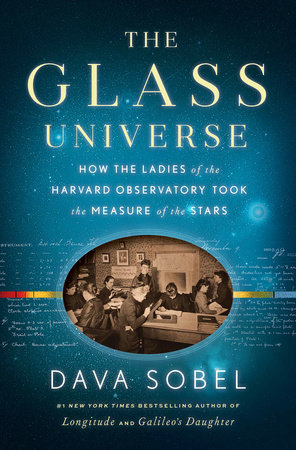After several years working as a live-in maid to the mother of Adlai Stevenson II, Matilda Calcote headed to the West Coast in 1944 to work as a ship welder building destroyers for the U.S. military. A regular "Rosie the Riveter," she remained there for several years, also working as a spot painter and tank cleaner. But Matilda soon returned to Bloomington when the gruesome sight of dead sailors in the bulkhead of ships coming to port became too much to bear. She lived another 40 years and was an active member of the African-American community.
Calcote is one of eight diverse past McLean County personalities featured in dramatic recreations at this year's Evergreen Cemetery Walk in Bloomington, which continues next weekend.
Every year, the Evergreen Cemetery Walk brings the voices of McLean County's history to life. Costumed actors portray individuals representing all walks of life from the county's past on the beautiful grounds of Evergreen Memorial Cemetery. This event serves over 3,500 people (mostly students) every year. To date, the walk has featured 157 different individuals from all walks of life, whose stories illustrate the impact the people of McLean County have had on history -- locally, regionally, nationally, and internationally.
Please visit http://www.mchistory.org/learn/programs/cemwalk.php to purchase tickets; for more information on purchasing tickets, please call 309-827-0428309-827-0428. Tickets also are for sale at Casey's Garden Shop, The Garlic Press, and Evergreen Memorial Cemetery.
Matilda Bell Heaston entered the world on November 30, 1910. Born to Jake and Doshie (Robinson) Heaston in Randolph, Tennessee, Matilda was one of 15 children though it is unclear exactly how many brothers and sisters she had. While living in Tennessee, Matilda's parents were sharecroppers. In 1920, at the age of 10, Matilda and her family moved to Luxora, Arkansas, just across the Mississippi River. There, Matilda’s parents were able to farm independently.
Many African-Americans and low-income whites experienced the oppressive sharecropping system of the South. In fact, Mississippi County, Arkansas, where the Heastons farmed, had a very high percentage of tenant farms which was 90.3 percent in 1930. This was the second highest rate among the Arkansas delta counties at that time. Matilda recalled “that real hard way of living, we never had that because we always raised our food....”
The family later moved into a house that they had purchased. Matilda grew up there and would eventually occupy the residence with her first husband and daughter. Her mother took in laundry and did not have a job outside of the home. Her father worked as a blacksmith and shoed horses. Matilda attended an all-African American school in Arkansas. In fact, she never attended an integrated school throughout her education.
In 1926 Matilda married Lucious Walton. On December 2 of that year, she gave birth to a daughter, Ruthie Mae Walton. Two years later, Matilda and Ruthie moved to Bloomington, Illinois where they joined Lillian Augusta (Heaston) and Robert Lee Boykin, Matilda’s older sister and brother-in-law. Matilda’s marriage had hit a rocky patch and she and Lucious had separated. Eighteen-year-old Matilda and her toddler briefly moved in with the Boykins before beginning work for Helen Stevenson. For at least two years, Matilda served as Helen’s personal maid and even lived at the Stevenson home at 1316 East Washington Street. Matilda later worked as a maid for other local families.
Domestic service was typical among African American women in Bloomington-Normal. In fact, 90 percent of African American workers in the nation in 1930 performed agricultural or domestic service jobs. Half of these domestic servants worked in private homes. The other half served as laundresses, waitresses, untrained nurses, and elevator operators among other roles. According to Matilda, jobs and housing were easy for her to find even during the economic challenges of the Great Depression.
Matilda left Illinois several times in the 1930s and 1940s. In 1930, she and her daughter moved to Holland, Missouri with to be with her parents and younger siblings. In the 1930 United States federal census, she was listed as “Matilda Young” though there is no record of another marriage at that time and the name does not appear again in any other sources.
In 1934, she returned home to Arkansas, where she stayed for one year. She distributed agricultural “commodities” in Blytheville as part of a government relief program. In October 1933, just prior to her arrival in Arkansas, President Roosevelt ordered the formation of the Federal Surplus Relief Corporation (FSRC), an operation overseen jointly by the Federal Emergency Relief Administration (FERA) and the Agricultural Adjustment Administration (AAA). The FSRC worked to reduce agricultural surplus by purchasing excess crops and animal products and distributing them to state relief agencies. Those state agencies—and employees like Matilda—would then provide this food to people in need. Interestingly, Matilda recalled that one of the women in charge “had more in her basement than the people had on the street.”
When asked whether the Great Depression affected her much, Matilda answered, “No, I always had work to do…. I never had anything in my life given to me free.” Over the course of her career, Matilda also served as a “commercial worker” and spent time working in restaurants, which she did not like very much.
By 1940, Matilda was married to William C. Miller. They lived in Bloomington’s Ward 5 (northwestern Bloomington) where they rented a home for $10 per month which is the equivalent of $169.86 in 2015 dollars. William worked as a garage janitor and earned $624 for 52 weeks of labor. Matilda was a housemaid for a private home, collecting $320 for 40 work weeks. Together they brought in $944 which is the equivalent of $16,150.21 in 2015 dollars. To put these amounts in perspective, the median annual income for a man in 1940 was $956; for a woman, it was $592. Assuming Matilda worked at least 40-hour weeks, this meant that she earned 20 cents per hour—much less than the minimum wage at the time which was 30 cents per hour.
Overall, this census data provides a valuable perspective on the African American economic situation. Federal measures to relieve the economic strain caused by the Great Depression failed to reach female African American workers. In particular, the Social Security Act and the Fair Labor Standards Act, which introduced the minimum wage, excluded the two sectors in which many African Americans worked; agriculture and domestic service.
Not all federal programs passed over African Americans workers. On June 25, 1941, President Franklin Roosevelt issued Executive Order 8802, which attempted to curb the “discrimination of workers in defense industries or government because of race, creed, color, or national origin….” Although the United States had not yet declared war, American industry was ramping up production to help its ally Great Britain fight the Axis powers. Despite this need, many factories refused to hire African Americans. These discriminatory practices angered Chicagoan Asa Philip Randolph, president of the Brotherhood of Sleeping Car Porters. Backed by the National Association for the Advancement of Colored People (NAACP) and the National Urban League, Randolph pushed for fair hiring practices. He called for 100,000 African Americans to march on Washington to protest discrimination in defense industries. Embarrassed, President Roosevelt issued his Order which also created a Committee on Fair Employment Practice. The committee was charged with investigating employment discrimination cases.






























